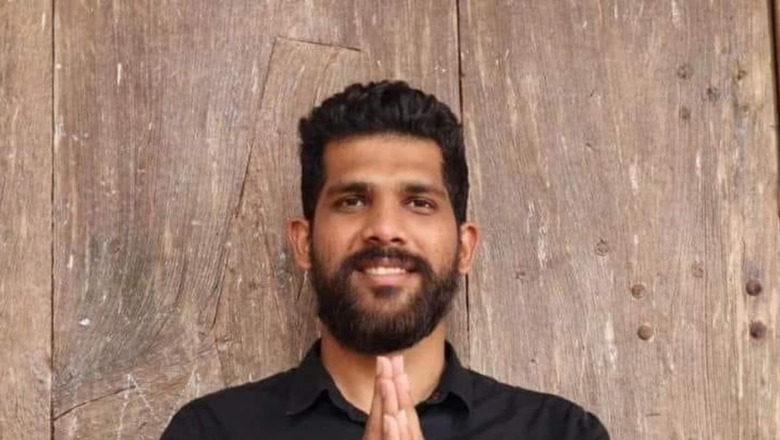
views
Having completely demolished the Congress in Punjab, the Aam Aadmi Party (AAP) is now harbouring ambition to replace the grand old party in Goa in the near future as the main opponent to the ruling Bharatiya Janata Party (BJP). The AAP made its maiden entry into the Goa Legislative Assembly in 2022 with two wins, after having drawn a blank in 2017, and in the process inflicting some tangential damage to the Congress’ prospects in a few Assembly constituencies.
Merchant Navy Captain Venzy Viegas defeated veteran politician and former Goa chief minister Churchill Alemao in his traditional stronghold of Benaulim while an engineer, Cruz Silva, won the Velim seat. Significantly, both these seats happen to be from the Catholic-dominated Salcete taluk of South Goa, which has remained traditionally a stronghold of the Congress.
Since its entry in Goa, the AAP has been eyeing the Catholic voter base of the Congress, inviting criticism since the last Assembly election that it is a B-team of the BJP out to scuttle the Congress’ chances. In 2017, just one AAP candidate was able to save her deposit. From there, the party seems to have come a long way. In Zila Panchayat elections in 2020, AAP’s Hanzel Fernandes emerged winner on the Benaulim seat.
Apart from these two victories – its Velim victory was by a narrow margin of 169 votes – the Aam Aadmi Party has hardly anything of significance to show. Its chief ministerial candidate Amit Palekar finished third in St. Cruz constituency in North Goa while party’s convener Rahul Mhambre lost his deposit in Mapusa constituency in North Goa.
This time, the AAP contested 39 of the 40 seats and was accused of openly pandering to politics of religion as it promised a chief minister from the Bhandari community, the dominant Hindu group, and a deputy chief minister from among the Catholics, Goa’s dominant minority (nearly 26 per cent of total state population). However, the party failed to significantly increase its vote share – from 6.27 per cent in 2017, it went up to 6.77 per cent in 2022.
Besides going solo, the AAP in Goa still lacks a charismatic leader and needs good candidates to build a perception that it can be a party which can rule Goa.
TMC’s Lacklustre Performance
Along with the AAP, two other political parties divided the anti-BJP vote in the state, namely the All India Trinamool Congress (TMC) and the Revolutionary Goans party (RG). The TMC made a dramatic entry into Goa hardly three months ahead of the Assembly election. It took Goa by storm, thanks to Prashant Kishor-led I-PAC, and targeted the Congress, the principal Opposition, by poaching its MLAs and a few other prospective candidates. At one point, it looked as if the TMC could make a serious dent to already beleaguered Congress’s electoral prospects, but many TMC leaders deserted the party expressing disillusionment even as the electoral process was on.
Though the party got into an electoral alliance with local outfit Maharashtrawadi Gomantak Party (MGP), it failed to win any seats while its alliance partner got two and declared its unconditional support to the BJP after the results. All the TMC could do was inflict some tangential damage to the Congress on some seats and secured less than 6 per cent vote share.
ALSO READ | By the Skin of its Teeth: How the BJP Won Goa
The Rise of Revolutionary Goans
As against this, another party which has made a splash in Goa’s Opposition space is debutant Revolutionary Goans party. This party was formed around five years ago by a local youth Manoj Parab, on the lines of Raj Thackeray’s Maharashtra Navnirman Sena (MNS), and is riding high on its aggressive ‘Goa for Goans’ stand. It seems to have captured the imagination of the local people as it managed to win one seat in a Catholic-dominated North Goa constituency of St. Andre. What is more significant is the party has taken the third spot after the ruling BJP (33 per cent) and the Congress (23 per cent) in terms of vote share – at around 9 per cent.
Many, including the media, did not take this group of radical youth with parochial agenda seriously in Goa, which is a cosmopolitan state with over 60 per cent urbanisation. But the party launched with the concept of “POGO” (People of Goan Origin) seems to have attracted a lot of following among the Goans living overseas, especially the NRI community in London and the Gulf. It is, therefore, not surprising that the BJP’s defeated candidate four-time MLA Francisco Silveira – he lost to RG’s Viresh Borkar in St. Andre – has gone public accusing ‘Londonkars’ (Goans working in London) from his constituency having pressured their families into voting for the Revolutionary Goans.
The growing appeal of the RG in rural Goa can be gauged from its performance in different constituencies: in cosmopolitan Mormugao, it got a measly 169 votes, and in rural Valpoi, an impressive 6,377.
Goa has intermittently witnessed slogans like ‘Goa for Goans’ but such voices have remained feeble. A sentiment has been simmering that locals are getting a raw deal in terms of opportunities as migration to Goa started soaring. But this sentiment has become strong as the demographic of those migrating to Goa changed over the years – from manual labour to the rich eyeing a second or a third home in Goa.
The tiny state with less than 15 lakh population and a total area of less than 3,700 sq km also attracts over 80 lakh tourists annually, thus putting tremendous pressure on the basic needs of the local population.
ALSO READ | In Goa, the Route to BJP’s Victory Went through Congress
Lack of preference to locals for jobs and other economic opportunities, scarce land being bought by money bags coming from metros like Delhi and Mumbai, dilution of the Goan identity and most Goan politicians, so far, cultivating poor migrants’ vote-bank to come to power are issues that have provided political fodder to the Revolutionary Goans.
Many Goans who worry about their “asmitai” identity believe that RG is here to stay. So do the overseas Goans, who are pledging support to the RG youths through social media platforms.
Considering Goa’s temperament of peace, harmony and co-existence (and its heavy reliance on tourism), the admirers of the party are confident that it will eventually dial down its aggression and will be more practical in its approach to issues of protecting the interest of the locals.
Many Goans, therefore, feel the RG Party will spread roots as a significant player in Goa’s electoral space. The party fought on 38 of the 40 seats and managed a vote share higher than the AAP and the TMC, which have more resources at their disposal.
Dr Nandkumar Kamat, former Goa University researcher and political analyst, says: “The votes for RG party clearly indicate rise of militant Goanism and Goan self-identity politics, and they could perform well in the forthcoming village panchayat elections (six months away) if they maintain this momentum.” The AAP, the TMC or even the MGP, he feels, will not be able to match the militant and radical identity of RG Party.
MLA-elect of Revolutionary Goans Viresh Borkar said the party will pursue its primary causes like more ‘Persons of Goan Origin’ (POGO) in state legislature. However, in the larger constitutional framework of non-discrimination of citizens anywhere across the country, ideas like POGO will definitely face legal/statutory scrutiny.
Prakash Kamat is a senior journalist and political commentator. The views expressed in this article are those of the author and do not represent the stand of this publication.
Read all the Latest Opinion News and Breaking News here


















Comments
0 comment